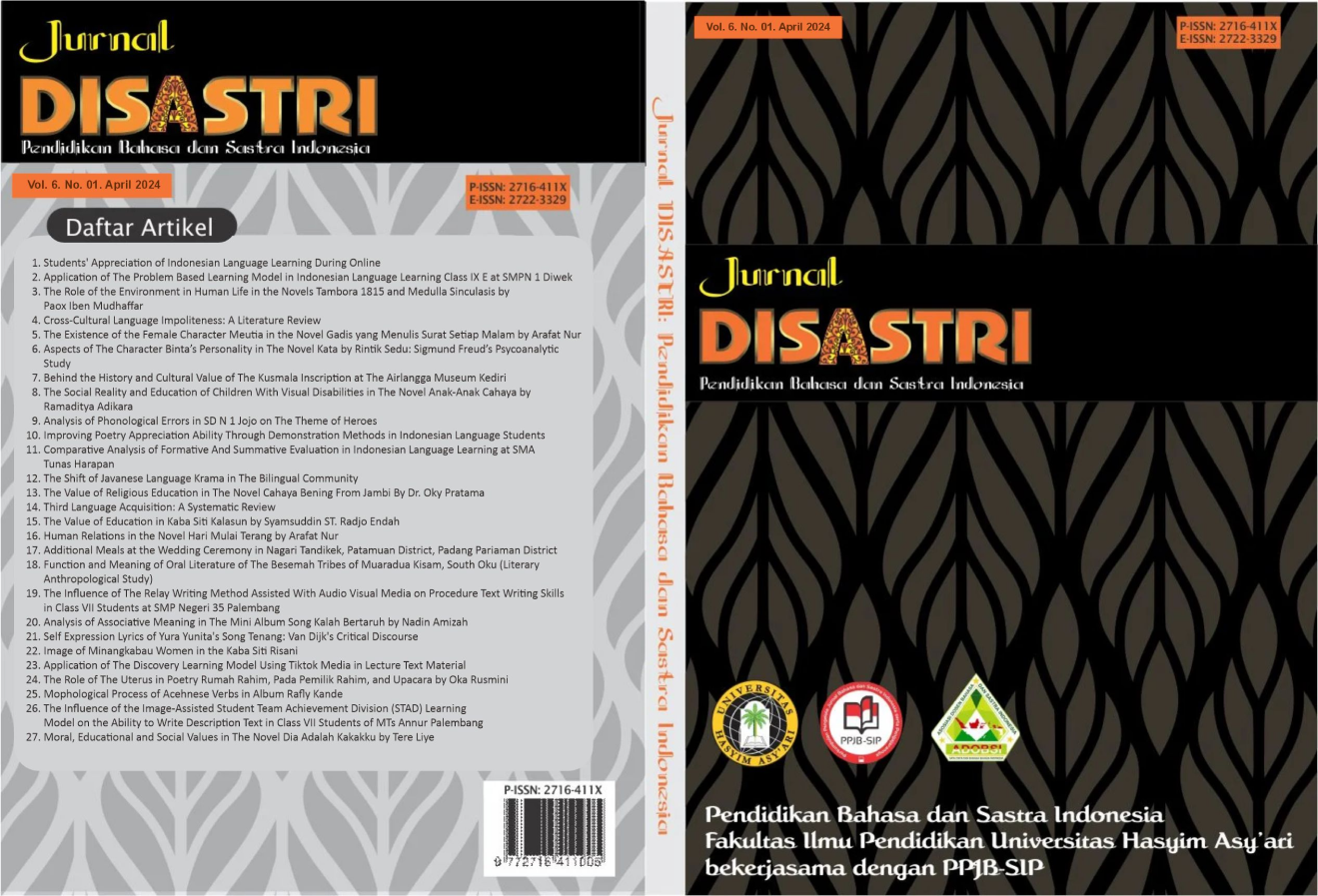Mophological Process of Acehnese Verbs in Album Rafly Kande
DOI:
https://doi.org/10.33752/disastri.v6i1.6052Keywords:
language, verb, song.Abstract
Language is one of the most important elements that influences life and culture, as well as being the main means of human communication. Acehnese is one of the regional languages that still lives in the Aceh region and is used by the majority of the population as a means of expressing their thoughts, feelings and desires. Morphology is the science that studies words and the influence of changes in word form on word groups and meanings. Songs can be interpreted as a variety of rhythmic sounds. This research aims to identify and analyze the morphological processes that occur in verbs in the Acehnese language contained in Rafli's albums. This aims to understand the morphological characteristics of verbs in the Acehnese language used in the context of music or works of art, especially in music albums produced by Rafli Kande. The method used is a qualitative descriptive method. The descriptive method is the presentation of data based on facts in accordance with those contained in Rafli's album. The data collection technique used was the technique of listening and noting the verbs in Rafli Kande's song lyrics. The results of this research show that there are four types of derivative verbs found in the Rafly Kande song album, namely the prefix meu- in the title of the song Aneuk Yatim, the prefix to the title of the song Gisa Bak Punca. The prefix neu- is in the title of the song Hoka Raja Loen, and the prefix geu- is found in the title of the song Rawa Tripa.
Downloads
Downloads
Published
How to Cite
Issue
Section
License
Copyright (c) 2024 Istiqamah, Putri Ananda Rizkyna, Hijaratunnisa

This work is licensed under a Creative Commons Attribution 4.0 International License.





.jpg)










